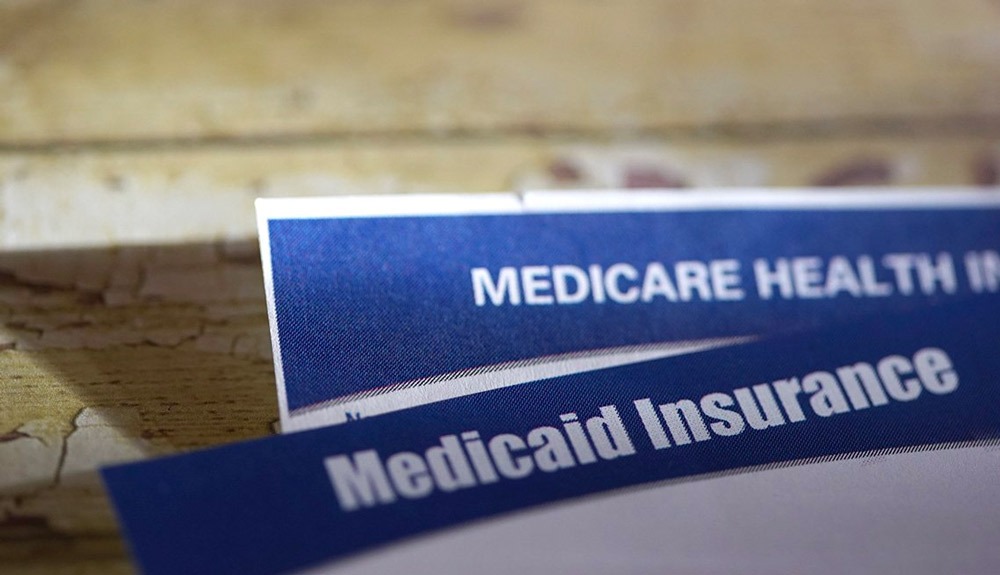If you have limited resources to manage various health conditions, you may think that your chances of getting adequate home health care for yourself or a loved one are also limited. The rules can be confusing, but many individuals who have chronic health conditions can obtain home healthcare with the help of Medicaid. Here is what you need to know if you have limited income and could benefit from assistance at home.
What is Medicaid?
As the nation’s public health insurance program for individuals with low incomes, Medicaid insures one in five Americans. It is the principal source of long-term care coverage for Americans as it covers an array of health services and limits out-of-pocket costs for patients. The Department of Health and Human Services (HHS) Centers for Medicare and Medicaid Services (CMS) implements Medicaid. Nearly 97 million Americans receive their health insurance through Medicaid in 2018, including 32 million children, six million seniors, and nine million people with disabilities. Medicaid is different than Medicare, although the two programs often cover many of the same types of healthcare services. About 10 million people, including seniors and those with disabilities, are enrolled in both programs.
Medicaid is a federal-state partnership, which means that each state administers its programs subject to federal regulations. The federal guidelines for Medicaid are broad, which means the benefits for enrollees can vary widely. That means what occurs in Minnesota may be different from what happens in Illinois, or any other state, concerning covered populations and services, how health care facilities receive payment, and so on. All patients who meet eligibility requirements receive guaranteed coverage.
The Evolution of Medicaid Coverage
Some people may think that they wouldn’t qualify for Medicaid because of the way the program was originally structured. Under the law originally passed in 1965, those getting Medicaid had to either receive Aid to Families with Dependent Children (AFDC) or federal Supplemental Security Income (SSI), which started in 1972, for those with disabilities. As the years passed, the U.S. Congress expanded the minimum income requirements and allowed states to include new coverage options. Other changes included expanding minimum requirements and providing new coverage options for children and people with disabilities. Another important change involved requiring Medicaid to sever the link between welfare and Medicaid eligibility while also enacting the Children’s Health Insurance Program (CHIP) to cover low-income children above the income cut-off for Medicaid. These expansions in Medicaid coverage of children heralded subsequent reforms that allowed Medicaid to become an income-based health coverage program.
How Medicaid Fills Insurance Gaps

Children account for about 43% of all Medicaid enrollees, while those with disabilities and senior citizens account for about 25%. Nearly half of children with special healthcare needs and 45% of nonelderly adults with disabilities like autism, traumatic brain injuries, Alzheimer’s disease, and the like have many of their healthcare needs met by Medicaid. In some cases, families with higher incomes can obtain Medicaid for children with significant disabilities to help fill private health insurance gaps and limit out-of-pocket expenses, which accounts somewhat for the high number of children enrolled. Another way that Medicaid helps is by helping almost 20% of Medicare beneficiaries with their Medicare premiums through cost-sharing and by providing benefits that Medicare may not cover. These individuals are known as dual enrollees. Unlike some commercial health insurance policies and Medicare, Medicaid also covers long-term care, including home-based services, as more than half of all Medicaid spending for long-term care is now for services provided in the home or community so patients can live independently rather than in institutions. Personal care services in the home are considered optional, but most Medicaid plans provide them.
How Medicare Enrollees Get Care in Minnesota
Most Medicaid enrollees obtain care through privately managed care plans. In Minnesota, patients with low income can get care through Medical Assistance (MA), the official name for the state’s Medicaid Program. Those with low incomes who don’t have access to affordable health insurance plans can get insurance through MinnesotaCare. MA does not have a monthly premium but requires small co-pays for some services. MinnesotaCare requires monthly premiums for some patients, based on their income and household size.
Managed-care plans, such as those mentioned above, ensure access to Medicaid services through their networks of providers. Minnesotans now have access to long-term care services through Medicaid that include home-based care. How much Medicaid pays is sometimes limited by the managed care plan that covers the patient.
Obtaining Low-Income Managed Care Plans to Pay for Homecare
Patients can obtain Medicaid plans through MNSure, Minnesota’s health insurance marketplace. This website is the only place where low-income Minnesotans can apply for financial help to lower the cost of monthly insurance premiums and out-of-pocket expenses or get government-sponsored health insurance through MA and MinnesotaCare.
MNSure has a plan comparison tool that determines if a potential enrollee qualifies for financial help for public health care programs, cost-sharing reductions, or tax credits to pay for healthcare and uses a statewide network of approved navigators and brokers. Every plan purchased has different levels of coverage for home healthcare services, so you should check your plan to see which services are covered under your plan.
Some patients who do not meet the income requirements may still qualify for one of the MNSure policies if they meet one of the following conditions:
-
Age 65-plus
-
Blind or have another disability, even if employed
-
Applying for a child with a disability
-
Possible qualification for a child under the TEFRA (Tax Equity Fiscal Responsibility Act)
-
Household income that is too high to quality but has healthcare expenses to spend down to 133% of poverty guidelines standard
-
Require help paying for long-term care
-
Need help paying for Medicare
Participation in Minnesota’s low-income healthcare plans is subject to income guidelines. Annual income for individuals applying for MA cannot be more than 16,970 per year of $35,090 if applying for a child. Those figures jump to $34,846 and $72,050, respectively for a family of four. Minnesota Care’s income limits are $25,520 for a single person and $52,400 for a family of four. Some Medicare beneficiaries with limited income and assets may receive help through reduced premiums and cost-sharing measures.
How Medicaid Helps Seniors Manage Home Care Costs

Seniors with low incomes can reduce their costs for home healthcare through Medicaid, as Medicare doesn’t cover all charges for various home healthcare services. Seniors can use Medicaid in a way similar to Medical Supplemental Insurance policies to obtain needed home healthcare services. The income and asset requirements are different than for younger patients applying for Medicaid.
The MA program limits the income of Minnesotans to $1,012 per month for an individual or $1,372 per couple to qualify. Patients who have higher incomes can spend down their incomes to qualify. This is a common financial strategy, but applicants must present medical bills to show that they have spent down their income to the specified level. Two managed Medicaid Programs, Minnesota Senior Health Options (MSHO) and Senior Care Plus (MSC+), offer short-term and long-term care assistance.
Services that help people stay in their homes or a community setting are called Home and Community-Based Waiver Services (HCBS). There are several HCBS programs that a person may qualify for if the person meets the level of care requirements. Seniors are also subject to asset limits, which are $3,000 for individuals and $6,000 for couples. If only one spouse receives long-term healthcare services, assets may be transferred to the spouse not receiving care to qualify. Also, the spouse receiving services must use most of his or her income to pay for long-term healthcare services. Seniors who plan on transferring assets must take care in the way they do so as the MA program places several restrictions on this measure. If you violate these restrictions, you could lose your eligibility for coverage.
Some assets are not considered when determining eligibility. These include:
-
Real or personal property used as a home, subject to a limit of $572,000
-
A motor vehicle used for transportation
-
Certain household goods or personal effects
The rules also specify that the spouse not getting treatment will retain an adequate level of income and assets to live comfortably. The division of marital assets is based on an assessment when the patient applies for Medicaid. The spousal share is only calculated once and applies to any further determination of benefits.
In Minnesota, the spouse who requires long-term home health care may qualify for Minnesota Medicaid under a hardship waiver, even if assets are more than those specified when those assets are part of a tax-deferred retirement account or a similar financial instrument. That provision is subject to a variety of rules. The community care spouse can keep all of his or her income and does not have to contribute monetarily to the spouse requiring long-term care.
What Happens If I Still Can’t Cover My Home Healthcare Costs?
Paying for home healthcare in Minnesota can be expensive. The average hourly rate for home care in the state is $29, with average rates in the Twin Cities slightly higher.
If you or a loved one needs home healthcare but are still having trouble covering the costs after Medicaid pays, you may still have options through various programs and waivers. The Elderly Waiver (EW) offers support for seniors who require care such as home modifications, personal care, home-delivered meals, etc. For those under age 65, the Community Access for Disability Inclusion (CADI) Waiver provides nursing services, homemaker services, personal assistance, and more.
The state of Minnesota also offers four programs outside of Medicaid to aid in care for seniors. The Minnesota Consumer Support Grant (CSG) supplies a cash grant to cover senior care such as home healthcare and meal planning and prep. Payment for personal caregivers, home-delivered meals, health aides, and skilled nursing may be obtained through the Alternative Care (AC) program. Essential Community Supports (ECS) and Minnesota’s Housing Support Program also provide some supplemental services for seniors.
How Centric Healthcare Can Help
Centric Healthcare delivers high-quality and cost-effective home healthcare to diverse populations in the Twin Cities and Rochester areas. When you come to us for an evaluation, we can help you find ways to pay for our home services. Determining what particular services your Medicaid policy pays for and what it doesn’t can be confusing, to say the least. Our expert staff will go over your qualifications and help you apply for additional funding if needed. Our goal is not only to provide you or your loved one with the highest quality care but also to help you get the most paid care for your situation. Contact us anytime for any questions that you may have or for an evaluation.

